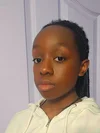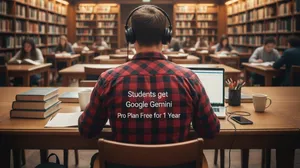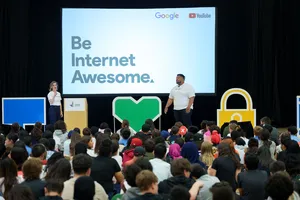Meet the young Canadian innovators of Google’s Code Next program

This past summer, Code Next, a Google-run program that aims to expand social capital for women, Black, Latinx & Indigenous students by offering free, culturally engaging and community-centric tech innovation programming for high school students, expanded to Canada, in hopes of reaching students in more rural and suburban communities who do not typically have access to after school programs.
Living in towns ranging from 2,400 people to more than 100,000 people, these students have hopes and dreams as diverse as their communities. We spoke with three Canadian students in Connect, an online program run by Code Next, to learn more about their goals in computer science and aspirations for the future.
Tayton Square is an aspiring rodeo bull rider living in the Mohawk Nation at Akwesasne (which is located along the St. Lawrence River and borders both Canada and the United States), has a passion for computer science. He was one of the first Canadian students ever to enroll in the Connect program.
“I am from Akwesasne, and there are not a lot of community members who are into computer science. This is mostly due to people not being able to afford expensive tech and being generally secluded in our reservation,” Tayton explains. “I have been interested in computers, gaming, and animation since I was eight years old. I would like to explore what else I could be really good at.”
Tayton Square

How can machines reduce human toil? That’s a question Marzia Raya might want to answer as she grows up. Right now, this Code Next student from Cornwall, Ontario is interested in the intersection between humans and machines—specifically, how machines can process superhuman amounts of information.
“What I like most about computer science is that it enables people to skip tedious tasks that take a long time to complete,” Marzia says. “It is also possible to obtain a regular stream of information with computer mechanics that humans would not be able to normally detect, such as pressure changes in a burglar alarm or the humidity data collected in a greenhouse. I hope to learn, mainly because the 21st century is a digital era and every field is connected somehow or other to computers.”
One field that’s definitely connected is interactive art, as Marzia displayed during her Demo Day project. The project shows off her understanding of “for loops” and manipulating coordinates using p5.js, a Javascript library. I challenged myself with copying an infinite geometric design using codes,” Marzia says. “Though it is a far cry from general mesmerizing and intricate scripts, I am quite pleased with my project in which human interactivity can make multiple designs that look even more 3D and complex.”
Marzia Raya

And what’s driving the ambition of Eniola Atoyebi in her town of The Pas, Manitoba? “I want to learn how to take [my] skills and use them to make something extraordinary. So far, none of my projects have left my computer, and I want to create something people are interested in,” Enola says.
A Hackergal Ambassador, Eniola created a coding club and taught girls how to code at a middle school. She also loves to make video games and is writing a book. That love of video games inspired Enolia’s demo day project. ”In my project, there are hundreds of circles, all of which have their own color, placement, and movement speed that the computer needs to keep track of. Throughout the creation of my project, I learned about how to create and control multiple moving elements using Javascript and I'm proud of the amount of complexity I was able to incorporate using minimal code.” she says.
While these curious-minded and forward-thinking students from across Canada are planning for their future roles in tech, our goal is to help them develop their technical intuition and ensure they have access to the tools they need to succeed.
To learn more about Code Next Connect, visit codenext.withgoogle.com.
Eniola Atoyebi





